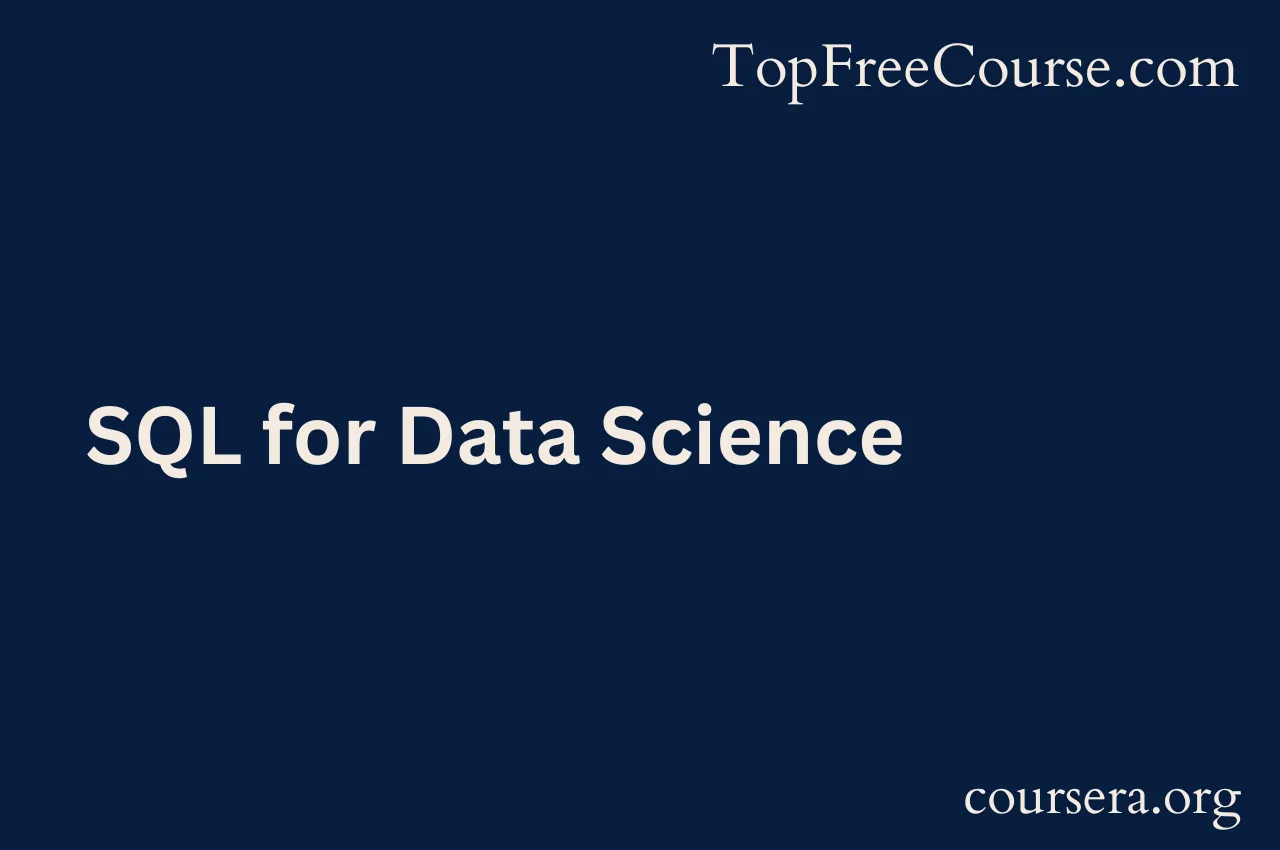What Will You Learn?
Identify a subset of data needed from a column or set of columns and write a SQL query to limit to those results.
Use SQL commands to filter, sort, and summarize data.
Create an analysis table from multiple queries using the UNION operator.
Manipulate strings, dates, & numeric data using functions to integrate data from different sources into fields with the correct format for analysis.
About This Course
Provider: Coursera
Format: Online
Duration: 18 hours to complete [Approx]
Target Audience: Beginners
Learning Objectives: Upon completion of this free course, you will acquire foundational skills in SQL, enabling them to analyze data for data science purposes
Course Prerequisites: NA
Assessment and Certification: NA
Instructor: University of California, Davis
Key Topics: Data Science, Data Analysis, Sqlite, SQL
Topic Covered:
- - Introduction
- - What is SQL
- - Data Models: Thinking About Your Data
- - Data Models: The Evolution of Data Models
- - Data Models: Relational vs. Transactional Models
- - Retrieving Data with a SELECT Statement
- - Creating Tables
- - Creating Temporary Tables
- - Adding Comments to SQL
- - Basics of Filtering with SQL
- - Advanced Filtering: IN, OR, and NOT
- - Using Wildcards in SQL
- - Sorting with ORDER BY
- - Math Operations
- - Aggregate Functions
- - Grouping Data with SQL
- - Using Subqueries
- - Subquery Best Practices and Considerations
- - Joining Tables: An Introduction
- - Cartesian (Cross) Joins
- - Inner Joins
- - Aliases and Self Joins
- - Advanced Joins: Left, Right, and Full Outer Joins
- - Unions
- - Working with Text Strings
- - Working with Date and Time Strings
- - Date and Time Strings Examples
- - Case Statements
- - Views
- - Data Governance and Profiling
- - Using SQL for Data Science

Comments